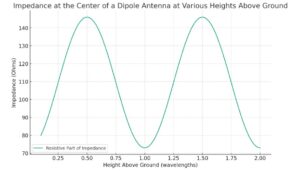7.7 ground and elevation effects, vertical radiation (take off) angles

Ground and Elevation Effects, Vertical Radiation Angles
Exploring the Terrain of Antenna Theory In the realm of amateur radio, the interplay between antenna characteristics, ground effects, and elevation is a topic of both complexity and fascination. This chapter, titled “Ground and Elevation Effects, Vertical Radiation Angles,” delves into the nuances of how an antenna’s performance is influenced by its physical environment. Understanding these principles is vital for amateur radio operators aiming to maximize their communication capabilities, whether for local contacts or long-distance DXing.
Ground Interactions and Radiation Patterns The chapter begins by examining how ground proximity and elevation impact the radiation patterns of various antennas, such as Yagi and dipole antennas. The concept of the effective ground plane is introduced, elucidating how reflections from the ground can affect an antenna’s radiation pattern. The discussion progresses to explore the importance of antenna height, revealing how different elevations can either enhance or hinder an antenna’s directivity and overall effectiveness.
Vertical Radiation Angles and Long-Distance Communication Central to this chapter is the concept of vertical radiation angles and their critical role in long-distance propagation. Through detailed explanations and practical examples, the chapter provides amateur radio operators with the knowledge to adjust their antenna setups for optimal vertical radiation angles, thereby enhancing their ability to communicate over vast distances.
